- Lamar Institute of Technology: focusing on innovative education, training, and career development for tomorrow’s workforce. Lamar Institute of Technology provides quality education and training that enable a diverse student population to achieve its career goals. Programs are enhanced by developing and maintaining partnerships with business, industry, and the community. Faculty are dedicated to teaching, advising, and scholarship. Both faculty and staff work to serve the Institute and the community. The Institute of Technology recognizes its obligation to make available to the community all the opportunities implicit in its function as a part of The Texas State University System.
School Highlights
Lamar Institute of Technology serves 5,902 students (29% of students are full-time).
The college's student:teacher ratio of 31:1 is higher than the state community college average of 23:1.
Minority enrollment is 61% of the student body (majority Black), which is less than the state average of 74%.
Quick Stats (2025)
- Enrollment: 5,902 students
- In-state tuition: $4,220
- Out-state tuition: $12,644
- Student:teacher ratio: 31:1
- Minority enrollment: 61%
- Source: Integrated Postsecondary Education Data System (IPEDS)
Top Rankings
Lamar Institute of Technology ranks among the top 20% of public schools in Texas for:
Category
Attribute
Diversity
School Overview
The teacher population of 193 teachers has stayed relatively flat over five years.
Lamar Institute of Technology
(TX) Community College Avg.
Carnegie Classification
Associate's Colleges: High Career & Technical-High Traditional
Baccalaureate/Associate's Colleges: Associate's Dominant
Institution Level
At least 2 but less than 4 years
At least 2 but less than 4 years
Institution Control
Public
Private, for profit
Total Faculty
193 staff
262 staff
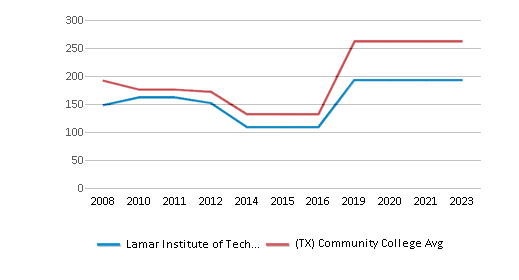
School Calendar
Student Body
The student population of Lamar Institute of Technology has grown by 46% over five years.
The student:teacher ratio of 31:1 has increased from 23:1 over five years.
The Lamar Institute of Technology diversity score of 0.70 is equal to the state average of 0.70. The school's diversity has stayed relatively flat over five years.
Total Enrollment
5,902 students
1,396 students
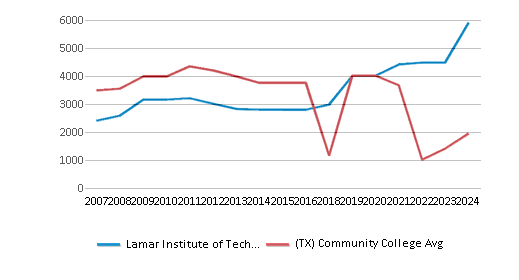
Student : Teacher Ratio
31:1
23:1
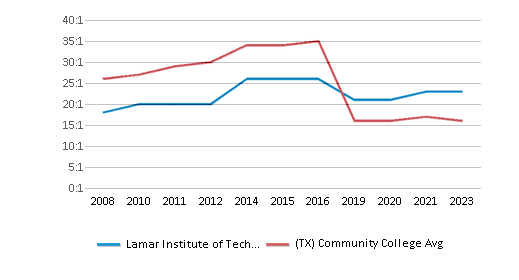
# Full-Time Students
1,736 students
890 students
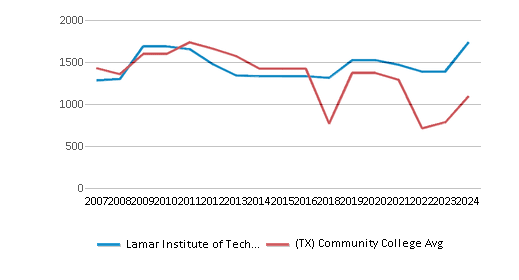
# Part-Time Students
4,166 students
4,022 students
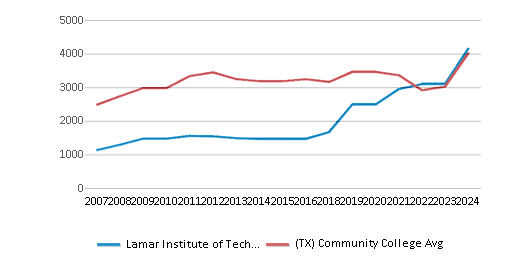
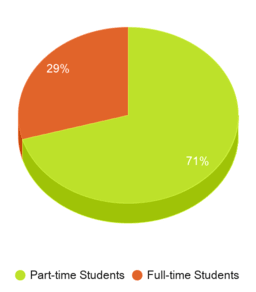
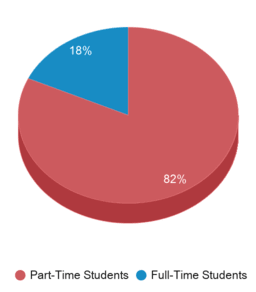
# Enrollment Undergraduate
590 students
403 students
# Full-Time Undergraduate Students
1,736 students
890 students
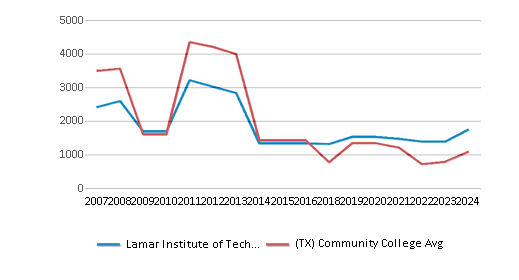
# Full-Time Graduate Students
n/a
40 students
# Part-Time Undergraduate Students
4,166 students
4,022 students
# Part-Time Graduate Students
n/a
47 students
Total Dormitory Capacity
n/a
252 students
% American Indian/Alaskan
1%
n/a
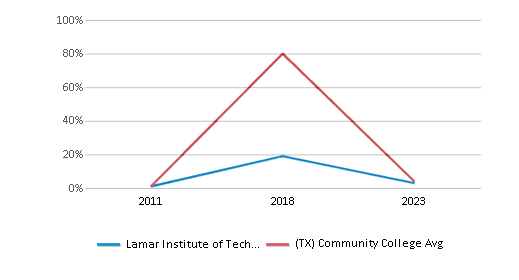
% Asian
3%
6%
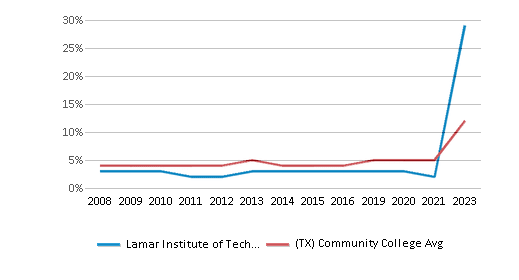
% Hispanic
23%
46%
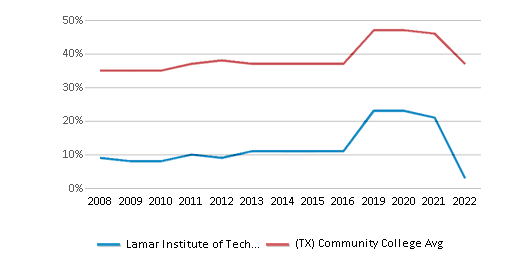
% Black
30%
14%
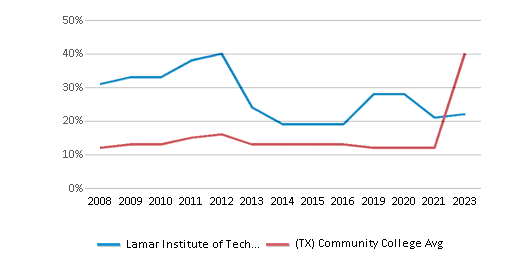
% White
39%
26%
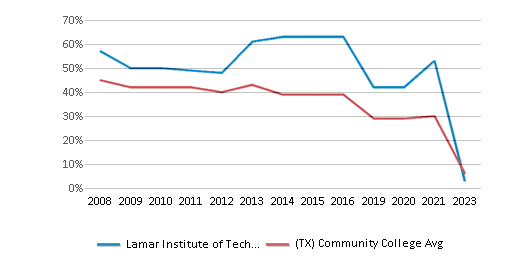
% Hawaiian
n/a
n/a
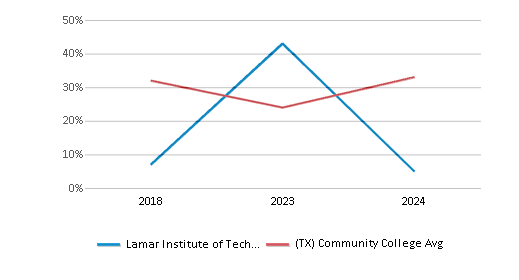
% Two or more races
1%
3%
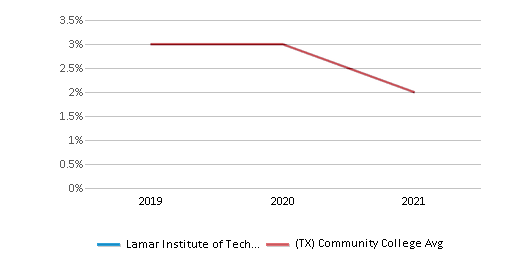
% Non Resident races
n/a
2%
% Unknown races
3%
3%
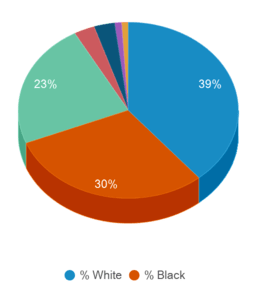
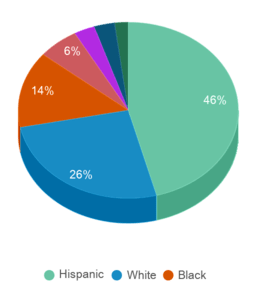
Diversity Score
0.70
0.70
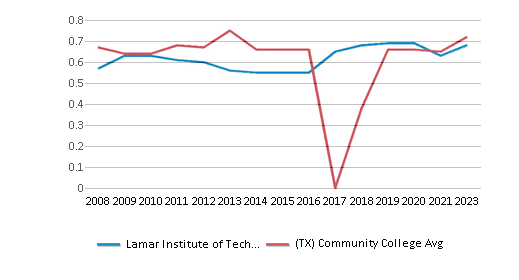
College Completion Rate (Students who graduate in less than 4 years)
0.2746%
0.5469%
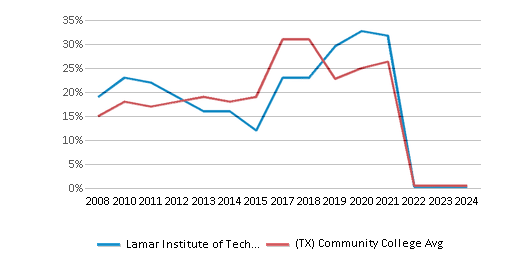
College Completion Rate (Students who graduate in 4 years or more than 4 years)
n/a
0.3357%
Average Graduate Earnings (10 Years)
$48,200
$34,600
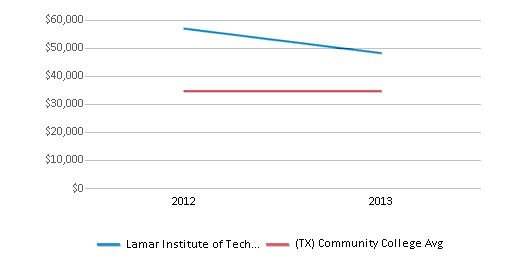
Tuition and Acceptance Rate
The public in-state tuition of $4,220 is more than the state average of $3,316. The in-state tuition has stayed relatively flat over four years.
The public out-state tuition of $12,644 is more than the state average of $5,750. The out-state tuition has declined by 17% over four years.
In-State Tuition Fees
$4,220
$3,316
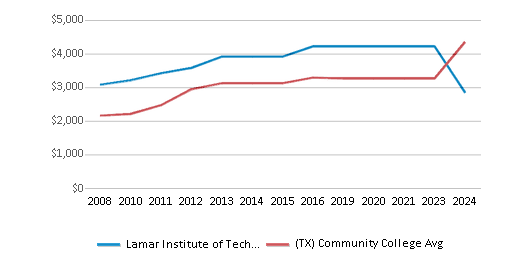
Out-State Tuition Fees
$12,644
$5,750
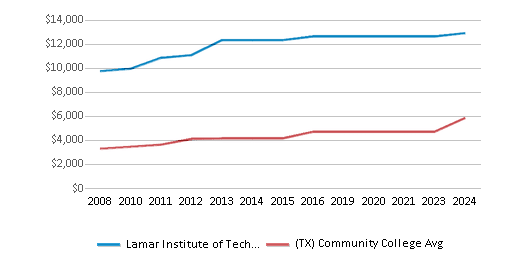
% Students Receiving Some Financial Aid
63%
84%
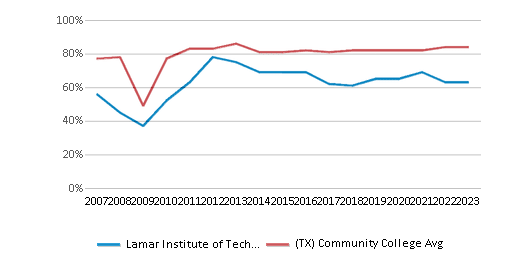
Median Debt for Graduates
$10,500
$10,765
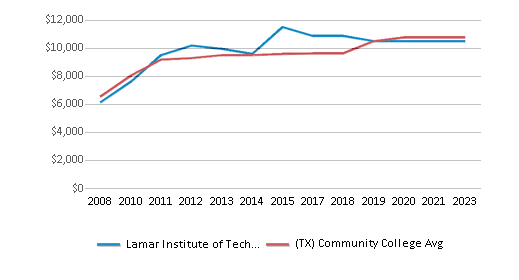
Median Debt for Dropouts
$5,567
$5,500
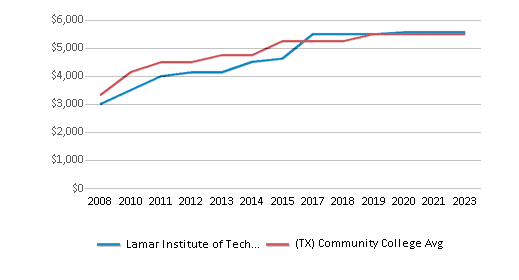
Acceptance Rate
n/a
81%
Source: 2024 (or latest year available) Integrated Postsecondary Education Data System (IPEDS)
Frequently Asked Questions
How much does Lamar Institute of Technology cost?
Lamar Institute of Technology's tuition is approximately $4,220 for In-State students and $12,644 for Out-State students.
What is Lamar Institute of Technology's ranking?
Lamar Institute of Technology ranks among the top 20% of community college in Texas for: Diversity in US community colleges.
Recent Articles

Obtaining Your Bachelor's Degree at a Community College
Explore the evolving landscape of community colleges offering bachelor's degrees, addressing affordability, accessibility, and workforce needs.

A to Z of Community College Certificates and Courses
From business and healthcare to technology and skilled trades, the article showcases the breadth of options available to students seeking to enhance their knowledge, develop new skills, or pursue career advancement.

What is a Community College?
This comprehensive guide explains what a community college is, its history, and its role in higher education. It covers the types of programs offered, differences from four-year colleges, benefits of attending, and important considerations for prospective students, providing valuable insights for those exploring educational options.










